Additional notes (click to expand)
Medicinal
Also contains papaverine used for treating angina and supraventricular tachycardia. Papverine is an ANTISPASMODIC used for treating intestinal colic, bile duct and ureteric spasm, vasospasm (angina, subarachnoid bleeds), erectile dysfunction, (migraine). Calcium channel blocker.
Cryopreservation of blood vessels.
It was converted to Verapamil (see reference, with similar uses and treatment of cardiac arrhythmias and hypertension
http://www.infomed.ch/100drugs/veraphar.html
POM morphine, heroin, codeine, papaveretum, noscapine, Bentley compounds
Opiate receptor and calcium channel blockade. Contains morphine and codeine, powerful analgesics.
Papaver somniferum morphine. Morphine is made from opium, the milky sap from the seed capsule of the poppy, Papaver somniferum. It has been used for pain relief for more than 5000 years. In patients who have heart attacks, it not only relieves the pain but also helps breathlessness caused by pulmonary oedema, fluid in the lungs. It makes it easier for the failing heart to pump blood thorough the lungs by relaxing the pulmonary blood vessels. Opium also contains small amounts of papaverine from which a synthetic analogue, verapamil was derived in the 1960s and which is used to control very rapid heart rates.
William Harvey and plant derived medicines currently used in cardiovascular medicine, Prof Michael de Swiet's Notes 2018
Click the link to access the Podcasts including Papaver somniferum
Garden podcasts
link
Click the link to access the TEXT of the Podcast on Papaver somniferum
Podcast text - Papaver somniferum
link
There is a video by Dr Henry Oakele
Videos from the garden
link
Nomenclature
Somniferum = from the Latin - bringing sleep.
Other use
Papaver somniferum L. Papaveraceae Opium Poppy Distribution: Asia minor, but has been dated to 5000BC in Spanish caves. Now grows almost everywhere. The oldest medicine in continuous use, described in the Ebers' papyrus (1550 BC), called Meconium, Laudanum, Paregoric and syrup of poppies. Culpeper (1650) on Meconium '...the juyce of English Poppies boyled till it be thick' and 'I am of the opinion that Opium is nothing else but the juyce of poppies growing in hotter countries, for such Opium as Authors talk of comes from Utopia [he means an imaginary land, I suspect]’. He cautions 'Syrups of Poppies provoke sleep, but in that I desire they may be used with a great deal of caution and wariness...' and warns in particular about giving syrup of poppies to children to get them to sleep. The alkaloids in the sap include: Morphine 12% - affects μ-opioid receptors in the brain and causes happiness, sleepiness, pain relief, suppresses cough and causes constipation. Codeine 3% – mild opiate actions – converted to morphine in the body. Papaverine, relaxes smooth muscle spasm in arteries of heart and brain, and also for intestinal spasm, migraine and erectile dysfunction. Not analgesic. Thebaine mildly analgesic, stimulatory, is made into oxycodone and oxymorphone which are analgesics. Protopine – analgesic, antihistamine so relieves pain of inflammation. Noscapine – anti-tussive (anti-cough). In 2006 the world production of opium was 6,610 metric tons, in 1906 it was over 30,000 tons when 25% of Chinese males were regular users. The Opium wars of the end of the 19th century were caused by Britain selling huge quantities of Opium to China to restore the balance of payments deficit. Laudanum: 10mg of morphine (as opium) per ml. Paregoric: camphorated opium tincture. 0.4mg morphine per ml. Gee’s Linctus: up to 60 mg in a bottle. J Collis Browne’s chlorodyne: cannabis, morphine, alcohol etc. Kaolin and Morph. - up to 60 mg in a bottle. Dover’s Powders – contained Ipecacuana and morphine. Heroin is made from morphine, but converted back into morphine in the body. One gram of poppy seeds contains 0.250mgm of morphine, and while one poppy seed bagel will make a urine test positive for morphine for a week, one would need 30-40 bagels to have any discernible effect.
Oakeley, Dr. Henry F. (2013). Wellcome Library notes.
link
Notes by Henry Oakeley from Lindley's 'Flora Medica' (1838): The Opium Poppy comes into flower in July in the Garden. It is still one of the best cash crops in the world for medicinal, and other, applications, having apparently been in use since 4,000 BC (found illustrated on Sumerian pottery). Lindley writes ‘from the wounded, half-ripe [seed] capsules flows a juice that concretes into opium, that well-known powerful narcotic drug’. The dried seeds are sweet to the taste and commonly used to ornament bread and bagels. Lindley again: ‘The seeds are not narcotic but yield a bland oil, similar to that obtained from olives’. Various television shows recently have alleged that one can test positive for opiates after eating two to four bagels, so perhaps athletes should take care when visiting the bakery.
Lindley, John. (1838). Flora Medica, Longman, Orme, Brown, Green & Longmans
‘Poppy seeds are widely used in Middle eastern and Central European cookery for their flavour and appearance. They come nowadays from selected cultivars of P somniferum with a very low morphine content. The Czech Republic, the main exporter , produced 25000 tons in 2018
Professor Anthony Dayan, 2022
Toxicity
Yes; morphine etc alkaloids.
Professor Anthony Dayan, 2021
"Humans/Pets: harmful if eaten" - HTA guidelines
HTA Guide to Potentially Harmful Plants, 3rd Edition (2022)
Geographical distribution
- Africa, Macaronesia, Canary Is.
- Africa, Macaronesia, Madeira
- Africa, Northern Africa, Algeria
- Africa, Northern Africa, Libya
- Africa, Northern Africa, Morocco
- Africa, Northern Africa, Tunisia
- Asia-Temperate, Western Asia, Cyprus
- Europe, Southeastern Europe, Greece
- Europe, Southeastern Europe, Italy
- Europe, Southwestern Europe, France
- Europe, Southwestern Europe, Spain
Podcast
Papaver somniferum L.
Family: PAPAVERACEAEGenus: Papaver
Species: somniferum L.
Common names: Opium Poppy
Pharmacopoeia Londinensis name: Opium
Distribution summary: Mediterranean
Habit: Annual
Hardiness: H5 - Hardy; cold winter
Garden status: Currently grown
Garden location: Poisons garden (PETO), Pharmacopoeia Londinensis 1618 'Seeds & Grains' (HSE 8), Horseshoe parterre by William Harvey house (G), Display bed (R)
Flowering months: May, June
Reason for growing: Medicinal, toxic, prescription only medicine
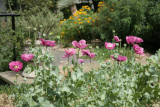

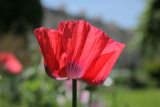
.JPG)
.JPG)
.JPG)
.JPG)
.JPG)

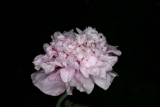
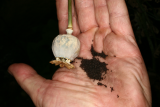
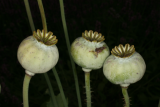

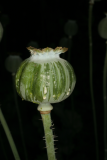
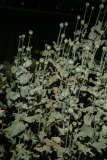
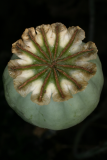
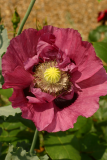

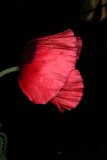
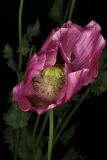
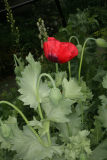
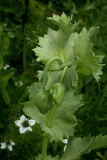
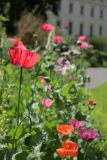
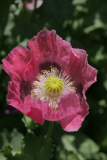
.JPG)
.JPG)
.JPG)

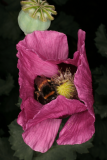
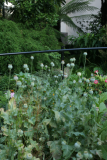
 seed heads.JPG)
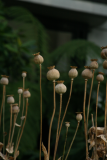
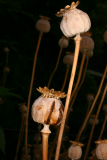

.JPG)